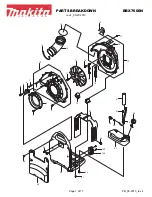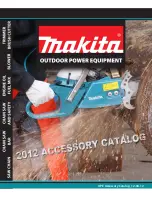
Documents are only to be used and distributed completely and unchanged. It is strictly the users´ responsibility to check
carefully the validity of this document with respect to his product. Manual-no.: 999084 / 05/10/2009
page 14 of 46
Attention: Important notes regarding the use of gas ballast
☞
Make sure that air/gas inlet through the gas ballast valve never lead to hazardous,
explosive or otherwise dangerous mixtures. If in doubt, use inert gas.
☞
When using air rather than inert gas, risk of significant damage to equipment and/or
facilities, risk of personal injury or even loss of life exists due to the formation of
hazardous and/or explosive mixtures if air and pumped media react inside or at the
outlet of the pump.
For
condensable vapours
(water vapour, solvents, ...):
☞
Do not pump vapour before pump has reached its operating
temperature and with gas ballast valve closed.
☞
Open gas ballast valve. (Closing of gas ballast valve by turn-
ing 180°.)
☞
The gas ballast valve is open if the arrow on the gas ballast
cap shows away from the pump.
☞
With gas ballast valve open ultimate vacuum will be reduced,
pumping speed is decreased.
☞
Use inert gas at the air inlet to avoid the formation of explo-
sive mixtures.
gas
ballast
In case of low boiling solvents when the formation of condensate is unlikely, the use of
gas ballast might be unnecessary.
☞
Operating the pump without gas ballast increases the solvent recovery rates at the
exhaust waste vapour condenser.
Attention: Notes concerning the operation of the exhaust waste vapour condenser
➨
Check hose connections prior to starting operation of the cooling system.
➨
Check coolant hoses regularly during operation.
☞
Ensure that the
coolant outlet pipeline
is always free and that it cannot get blocked.
☞
Maximum permissible coolant pressure at the exhaust waste vapour condenser:
6 bar (absolute)
☞
Comply with the maximum permissible coolant pressures of additional components
in the coolant circuit (e.g coolant valve).
☞
Avoid overpressure in the coolant circuit (e.g. caused by blocked or squeezed cool-
ant hoses).
☞
Permissible range of coolant temperature at the exhaust waste vapour condenser:
-15°C to +20°C
☞
The gas outlet (hose nozzle 10 mm) must not be blocked. The exhaust pipeline has
always to be free and pressureless to enable an unhindered discharge of gases.
➨
Check the overpressure safety relief device at the exhaust waste vapour condenser
regularly, replace if necessary. Check especially for sticking and cracks.
☞
Connect the exhaust to a suitable treatment plant to prevent the discharge of dan-
gerous gases and vapours to the surrounding atmosphere.
In case of
condensation:
➨
Check liquid level in both catchpots during operation. Avoid overflowing of the catch-
pots.
☞
Do not overfill the catchpots. Maximum liquid level approx. 80%, to avoid problems
when removing the catchpots.
➨
Check liquid level in both catchpots regularely and drain catchpots in time.
Removing the catchpots
:
Catchpot at outlet:
➨
Remove joint clip, remove catchpot and drain condensate.















































